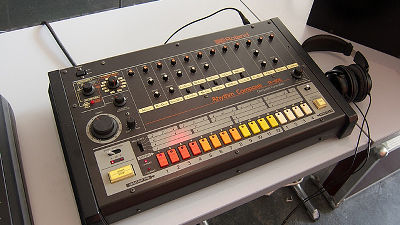Origin and legend of "Wall of Sound" created by the legendary band "Grateful Dead"
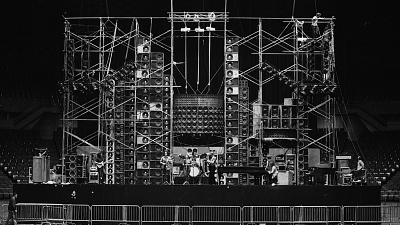
Grateful deadIs a band that appeared in the hippie movement that caught in the 1960s and 1970s and was handed down as a legendary existence even after the suspension of activity. Despite being unrelated to the mainstream of music, from legendary bands that held stadium-grade concerts for over 30 years supported by enthusiastic fans and continued to mobilize a large audience Although various technologies were born, among them, a huge acoustic system with countless speaker units "Wall of Sound(Wall of sound) "is handed down as a system that can be called a crystal of engineering that symbolizes its originality and innovation.
The Wall of Sound | Motherboard
http://motherboard.vice.com/read/the-wall-of-sound
Grateful dead, one of the greatest bands in the world and a symbol of hippie culture, was formed in California, USA in the 1960s. Around me was a mecha lover and audio mania around the band who raised a band at a street corner studio by members such as guitar / vocal Jerry Garcia, Bob Wear, Phil Lesch who later led the band as a central character, and then many People who put their minds in the hallucination world of narcotics, and so on, people who decide the evolution of the band afterwards gathered.
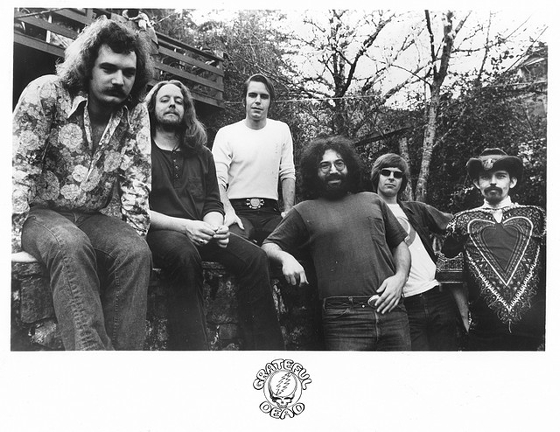
ByZoooma
Rick Turner, who was in charge of the band's equipment and instruments and later established "Allenbik" of equipment and musical instrument makers and supported the band, said, "People gathered," engineering, musical content, and experimental seeking The discussion for doing things happened, they were all not mandatory, they started naturally, "he says of the air of the time.
And from here, the history of the largest and innovative acoustic system in the world that will be built over a long time will begin. This will be an important moment in the history of the acoustic system in the concert, but it was not necessarily designed under a detailed plan, it was born out of a more free and casual atmosphere He said that. The acoustic system created in this way has been built up to huge systems with countless amplifiers, speakers, subwoofers, tweeters etc. stacked over 10 meters high and 30 meters wide, with a gross weight exceeding 70 tons. It becomes the existence which can also be called the pronoun of the band laterWall of SoundIt will be shaped.
Speaking of "Wall of Sound", this also left a name as a legendary producer in the history of musicPhil SpectorAlthough it is also known as the recording technique of the grateful dead, it refers to the speaker system piled up behind the stage. Born in the history of the band, this system is packed with elements that will be the origin of the later PA system (acoustic system), and it is used in outdoor festivals to gather tens of thousands of audience from small concert halls It is no exaggeration to say that all the sound systems start from here.
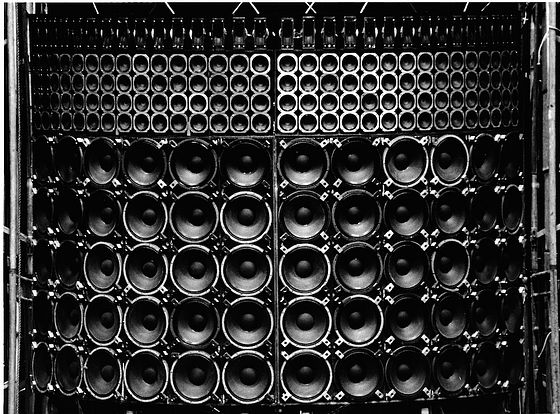
Around 1969, a hippie culture began in San Francisco's Hate Ashbury district, where Grateful Dead was the subject of deity worship. In the world of music, the power of electricity becomes popular, and the atmosphere of the concert which is drunk with loud volume spreads as closely related to euphoria feeling by drag. At that time, Grateful Dead and Jimi Hendriks were playing the live with the most volume, but in fact the sound quality was poorly said in reality.
The PA system is a dawn period that has not yet been born, and when the monitor speaker system for the player to hear his performance on the stage finally got used. In the modern PA system, the main speaker (FOH, front of house) that delivers sound to the audience is placed in front of the stage, but the system at that time played the role of the speaker piled behind the stage, the player Because the sound on the stage which was issued by the stage was the sound of the PA as it was, the howling and the unpleasant echo sound which can not bear with listening occurred, and the sound quality was terrible.
That terrible sound will have an adverse effect not only on the audience but also on the players side. The same can be said for the members of the Grateful Dead, they said they could not even confirm the sounds of the instruments they were playing on stage. When the sound of PA got together well at last it was in a state of "to bear to listen" and the era continued where the audience could force strongly unbearable sounds in the live where the adjustment was badly finished.
Owlsley Stanley, aka "Bear" was a sound engineer who solved this problem with the band. Stanley and Rick Turner and others will be handed down to future generations as a leading player of the sound of the Grateful Dead.
Bear born in Kentucky was one who was possessed by the charm of the sound. Drummer Mickey Heart who was a member of the time was a concert of Grateful Dead performed in 1974, and Bear headed towards the equipment "I love you, you also love me. I will tell you later that he was talking about why trying to annoy me.
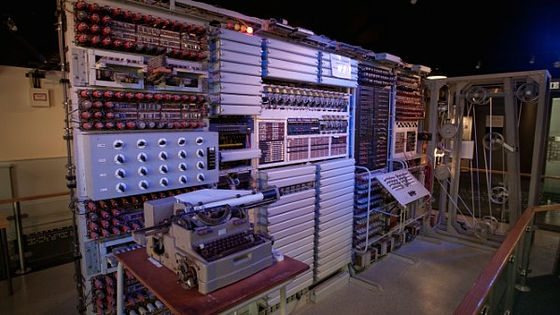
Bear was a man who had "gold" in hand with "ears" necessary for engineers. He was the person who was organizing the circulation of LSD that was prevalent in the Bay Area in San Francisco and was also the central character who determined the sound of the band. Bear believes that the sound of the band can be further enhanced, and at a one-day meeting he will cast a surprising proposal "as a PA system should be behind the band" as a solution to enhance sound quality.
About that aim Bear explained that the band members and the audience are able to listen to the same sound, but at the time this idea is also taken as a crazy suggestion to go against the times. After the meeting, his proposal was taken as a violation, but among the staff there is a movement to accept this idea positively. And in 1974, the band finally decided to place the PA system behind the stage and operate as a PA system integrating the monitoring system and FOH system.
From this system, a plurality of speakers are arranged in a vertical column shape to control the direction in which the sound flies for each frequency "Line array"Is born, which can be seen in modern PA systems as well. In addition, unique noise cancellation technology which suppresses howling and noise is brought to be produced.

About 1969, the band was vigorously performing live more than 150 times a year. Among them, the technology of the subsequent wall of sound continues to be polished at all times. Richard Petchner, who was building a cabinet to hold the speaker, recalls that "There was an experiment by the production committee working without break".
Because it was a system that always grows like this, it is very difficult to concretely identify when the system was completed, but it was difficult to identify when the system was completed, but it was difficult to identify when the system was completed on March 23, 1974 at the live show held at San Francisco Cowpalace It is said that the system is the moment when the wall of sound is completed for the first time.
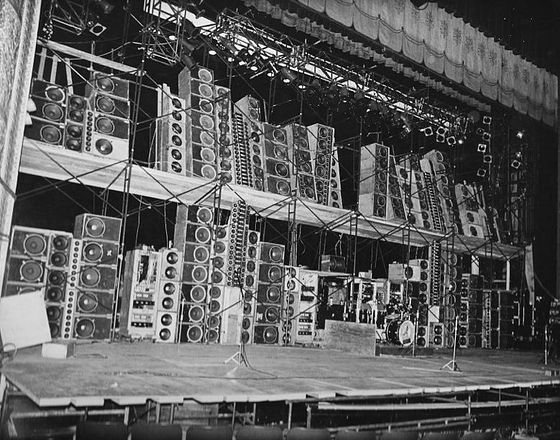
Dating back this about a year ago, the enthusiastic fans of the band, the so-called "DeadheadsEven among those called 'PA sounds', the severity of PA sound was a topic. In particular, it was in a situation where it was swirling as big dissatisfaction that not being able to listen with the satisfying sounds of the two guitar and the base multiplication which is carried out in the introduction of "Dark Star" which is one of the representative songs of the band.
Lesh, one of the members, said in an interview in 2011, "At the time there was not enough technology developed for electric instruments, how we lost the distortion of the sound and realize a pure sound Then we talked about what Bear proposed, "We introduced Altech's speakers, high fidelity amplifiers, and power amplifiers equipped with 4 vacuum tubes for each musical instrument, and we will put everything in a wooden enclosure." Three months later, we were supposed to play with that system that Bear made, "I looked back on the sound at that time.
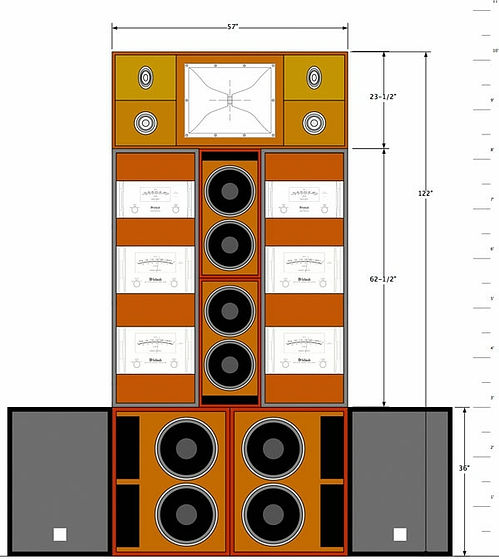
The "wall" which continued improvement continued enormous, reaching the scale to drive up to 600 JBL speaker units and 50 Electro Voice tweeter units with 50 Macintosh amps. When reaching this scale, it takes only one day to set up the PA system at the concert venue, just the transportation of acoustic equipment alone is full of huge trailers of 12 meters in length. Two sets of exactly the same scaffolding for setting up the "Wall" were created and it was decided to be carried to the concert venue alternately.

In addition, two staff teams were formed in order to make the setup smooth. When one team was doing work at the live venue, the other team headed to the next venue with another scaffolding set, and the operation method was introduced to advance the setting work in advance. All supplies such as PA equipment and stage equipment reached as much as 75 tons at the maximum, so that its operation cost was also burdened as a big burden. After all, "Wall" ended in the fate of actually being operated only for about two years from 1972 to around 1974.
It is said that such a huge system consumed extremely large electricity of 28,000 watts at the maximum, but it seems that the sound was not necessarily "noisy". Since the system aim was focused on delivering as good a sound as far as possible to the far, it is surprising to say that we kept quality sounds that we could hear enough even at 2 km away.
One of the features that is quite different from the mainstream of modern PA systems is that separate systems were constructed for each band member. In a general PA system, all the sounds of each member are input to one mixer desk, adjusted to balance and sent to the PA speaker, but in the case of Grateful Dead each member Own soundonlyI had a system to play. The balance of the volume is adjusted by raising and lowering the volume of each member by each member, and in fact it is quite interesting that the sound of the band was made in a primitive way.
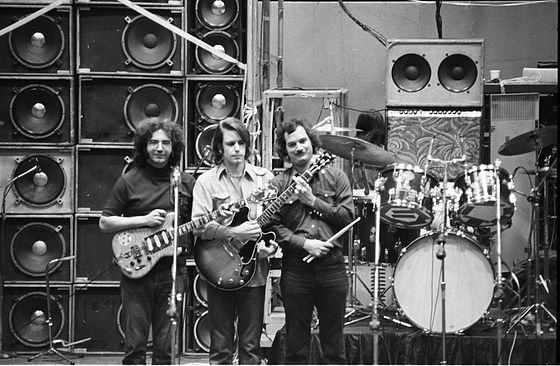
It is said that it was a system that was considerably enlarged, and on the other hand it was a fact that there was a problem in actual operation. Because countless speaker units were used, it was natural that somewhere in the live was broken. Therefore, every time the live ended the staff was forced to work to replace the broken unit.
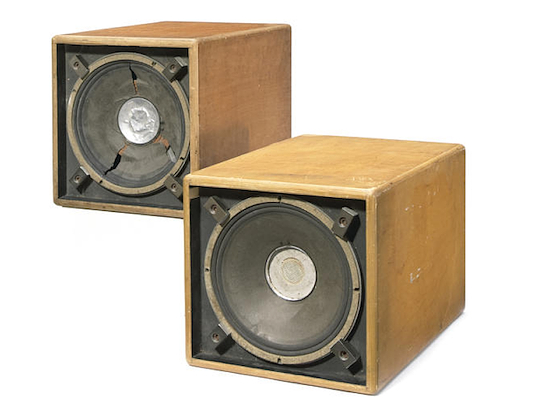
And of course it can not forget that it was a big burden in terms of cost as well. At that time the cost of 275,000 dollars a year was necessary, but when converting it to the present amount of money it was said that the cost of 1.3 million dollars (about 160 million yen) was required every year about. Because there was such a problem, "Wall" was to follow the fate that it will not be used around 1974.
Although "Wall" became legend in this way, in the 21st century an attempt was made to reproduce a part of the system. "DespacioThe speaker system called "Wall" at that time in 1974 reproduced almost faithfully, it was said that it was actually used in the festival held in Manchester in 2013. It seems that the volume emitted from the system with 6 amps and huge speakers reaching 7.5 tons has reached 150 dB, which is equivalent to when the jet plane takes off.
Despacio soundsystem: James Murphy and 2Many DJs in conversation - YouTube
The "Wall of Sound" that appeared at the dawn of the PA system, original and innovative remained in the memory of people in this way, and it was handed down as a legend. The modern PA system has become far more compact and has greatly facilitated transportation and installation, but it is not an overstatement to say that "Wall" was the basis of all of them. The sound that the gigantic system realized has remained as a memory of some people, and even now it seems that various ingenuity has been continued in order to get closer to that sound even one step.
Related Posts:
in Hardware, Posted by darkhorse_log
